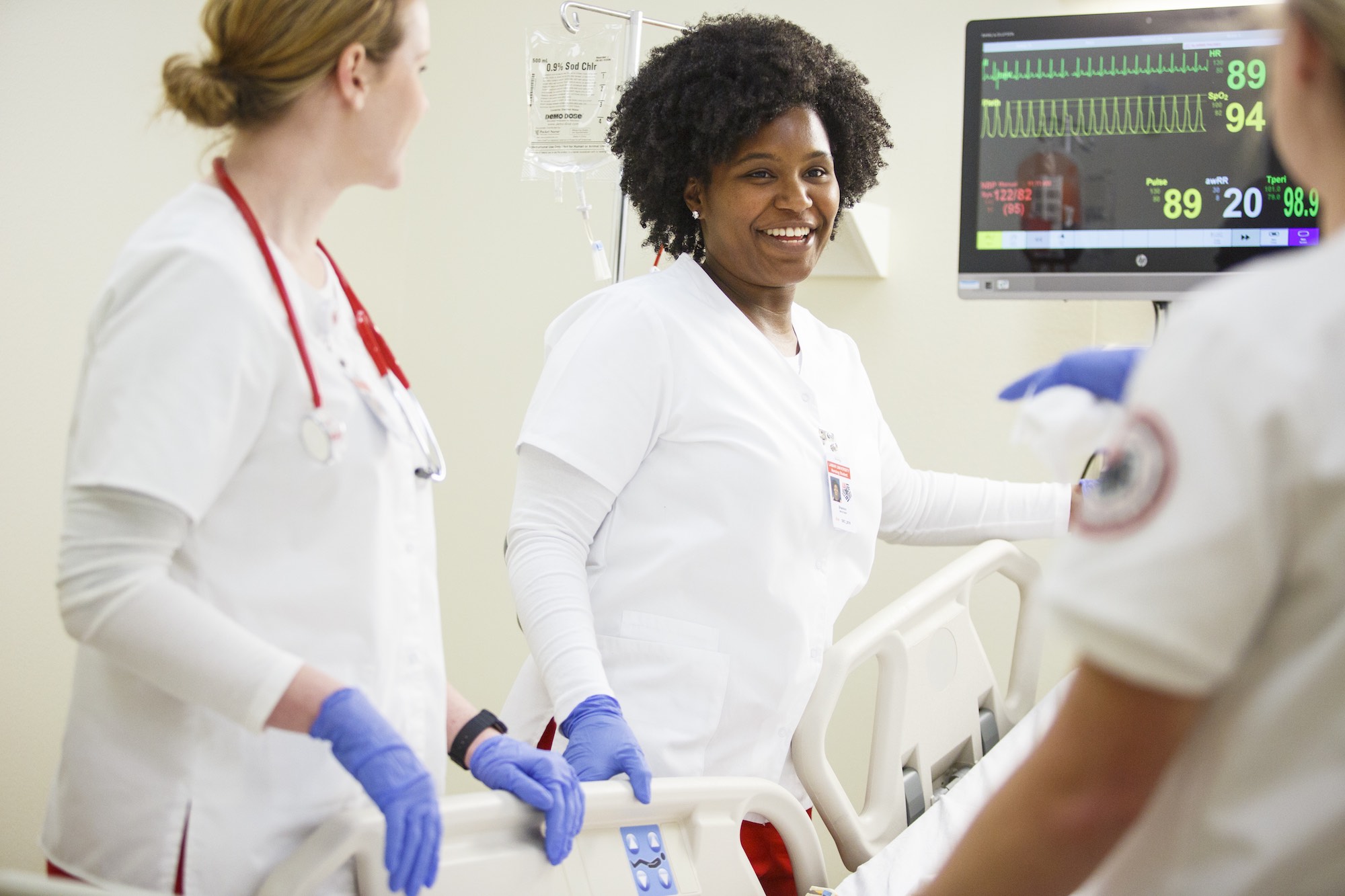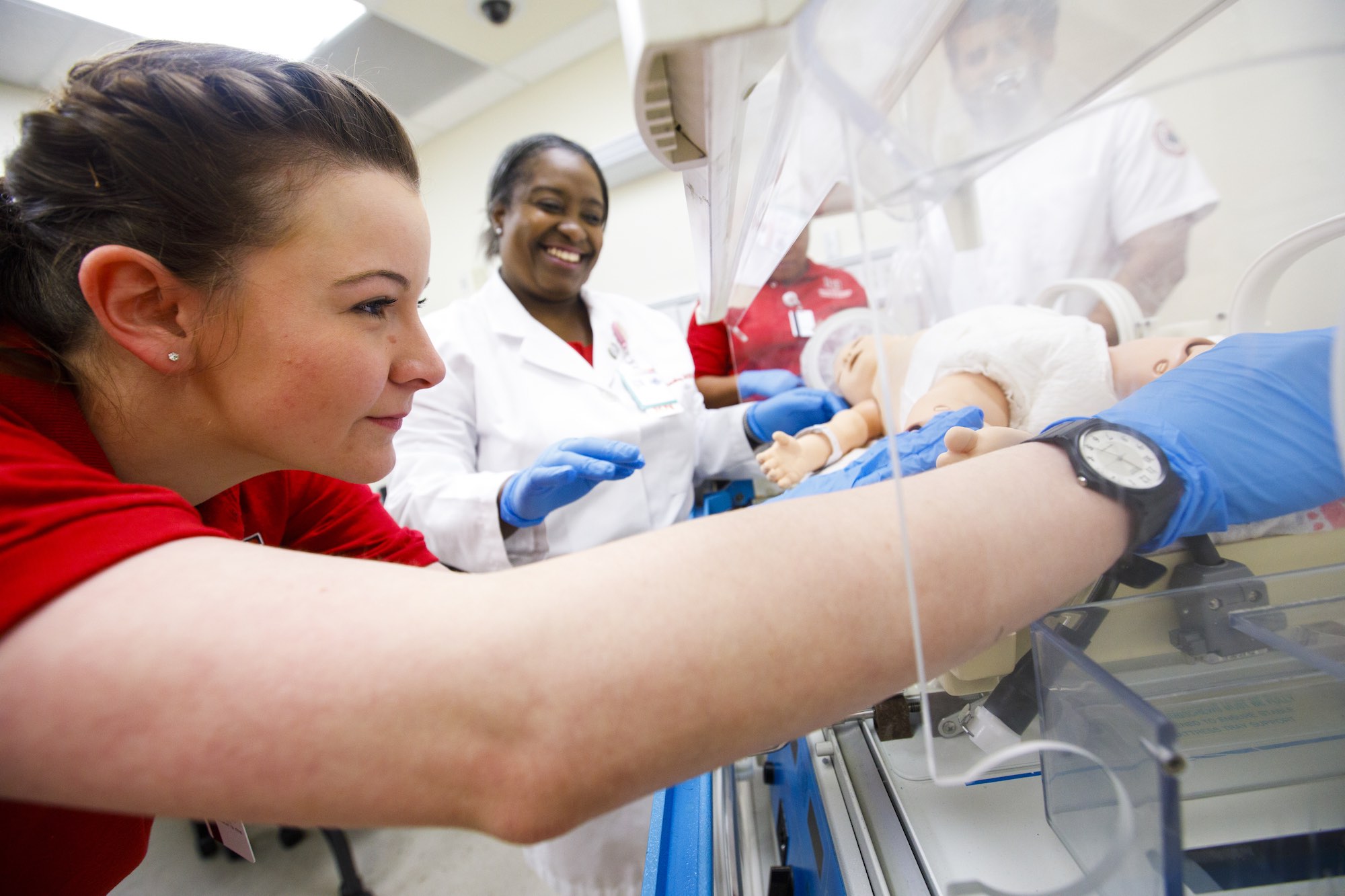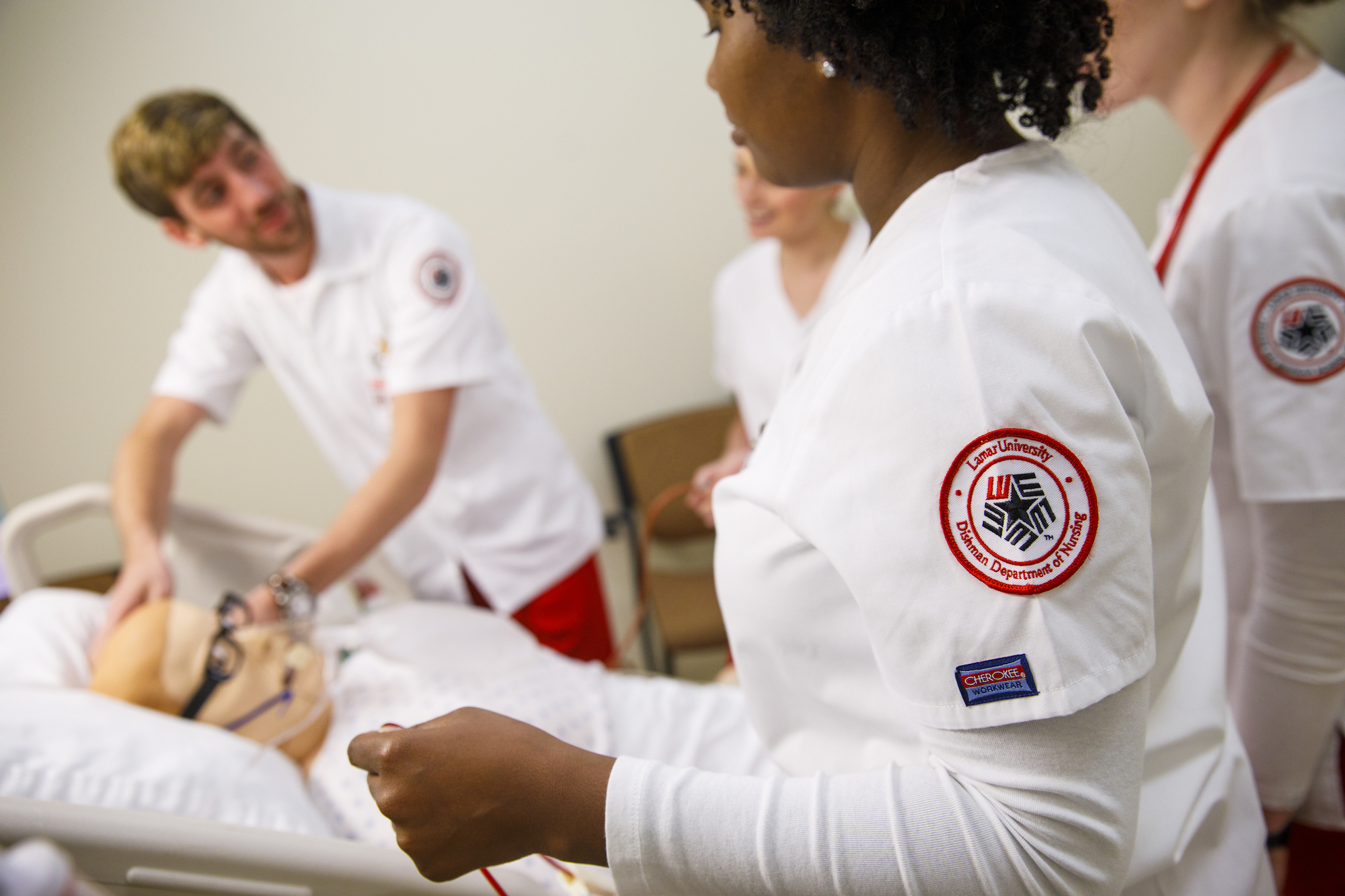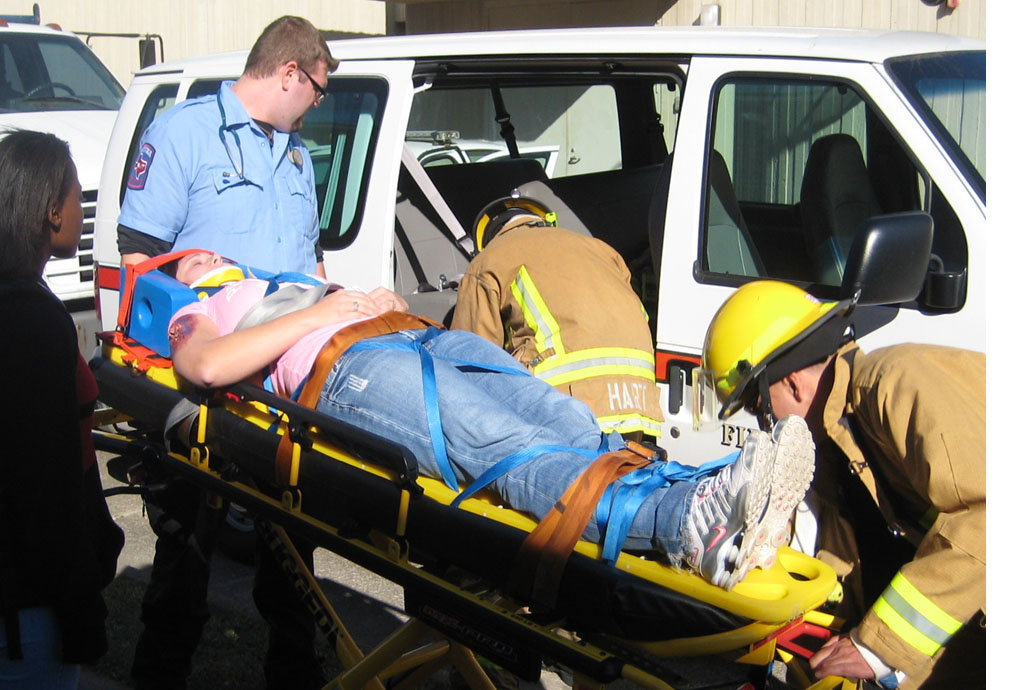Simulation Program
Where integration of informatics, evidence-based practice, clinical reasoning, cultural diversity, caring, interdisciplinary teamwork and collaboration comes to life!
Simulation Program
Mission
The mission of the Dishman School of Nursing Simulation Program is to create a safe and effective learning environment where students use theory, evidence, and clinical reasoning to deliver culturally sensitive and technically proficient nursing care. In this high-fidelity healthcare environment, students are expected to develop leadership skills as they use active inquiry and intraprofessional/interprofessional teamwork to make clinical judgments. Faculty facilitate student success by providing orientation to the simulation outcomes, guidance as needed, and by modeling clinical reasoning during debriefing sessions.
Vision
The future of the Dishman School of Nursing Simulation Center involves expanding community and global interprofessional partnerships, disseminating best practices in nursing education, using simulation in non-traditional settings, and promoting simulation research to improve healthcare delivery and patient outcomes. The Simulation Center aims to be a center for testing the effectiveness of new patient care technology and informatics systems. The Simulation Center endeavors to be a local and regional community resource for assessment and evaluation of competencies using simulation.
Why do we need a clinical simulation center?
Students in the Dishman School of Nursing participate in clinical experiences in local hospitals, doctor’s offices, clinics, schools, and public health agencies. Since it is not possible to ensure each student will receive the same experience in these situations, the Clinical Simulation Center exposes every student to select types of common, complex and rare situations. Students are able to use the information they have learned in class and apply it to patient situations and make real decisions. Also, they are able to see the positive or negative outcomes of their decisions and clinical judgments. The Simulation Center is an excellent place to learn without the risk of causing harm to patients. Each simulation room is equipped with a mannequin, computer for documentation, supplies needed for medication administration and procedures, and a telephone to notify the primary care provider of changes in the patient’s condition. This center promotes patient safety by placing students in a realistic and often times hectic situation, in order to teach them how to think and make quick and accurate decisions. Students appreciate these experiences and state they are more prepared for exams, as well as, situations they encounter in hospitals and other healthcare agencies.
real decisions. Also, they are able to see the positive or negative outcomes of their decisions and clinical judgments. The Simulation Center is an excellent place to learn without the risk of causing harm to patients. Each simulation room is equipped with a mannequin, computer for documentation, supplies needed for medication administration and procedures, and a telephone to notify the primary care provider of changes in the patient’s condition. This center promotes patient safety by placing students in a realistic and often times hectic situation, in order to teach them how to think and make quick and accurate decisions. Students appreciate these experiences and state they are more prepared for exams, as well as, situations they encounter in hospitals and other healthcare agencies.
Types of Rooms
The Simulation Center is composed of individual patient rooms, which are flexibly designed to accommodate various types of simulations and debriefing sessions.
 · Pediatrics
· Pediatrics
· Labor and Delivery
· Medical-Surgical
· Critical Care
· Mental Health
· Clinic & Primary Care
· Community Health (Apartment)
· Multiple Patients & Upper Level Management
· Older Adults
Types of Simulation
Standardized Patients - “Standardized Patients” are actual people from the community trained to portray a patient with a particular problem. Faculty utilize Standardized Patients for students learning to complete a health history and physical assessment. Standardized Patients provide students with feedback after the encounter in order to help students learn how to effectively communicate. These feedback sessions are invaluable to students because they receive an actual person’s perception of how it feels to be a patient, along with faculty evaluation of students’ performance. Students oftentimes hug their patients after the simulation and thank them for the opportunity to work with them.
Human Patient Simulators - Human Patient Simulators (HPS) are mannequins that have the ability to breathe, talk, sweat, cry, bleed and portray most of the symptoms of a patient in the hospital. Faculty choose to use HPS when simulations require invasive procedures such as administering intravenous medications, performing cardiopulmonary resuscitation (CPR) and simulating problems such as heart failure, diabetic ketoacidosis, administering blood, reactions to chemotherapy, life support (mechanical ventilation), etc. These mannequins also have monitors that realistically portray a critical care (telemetry) monitor. Students must synthesize knowledge learned in class, apply it to the current situation, communicate findings to the appropriate person, quickly administer the appropriate treatment and evaluate patient outcomes.
as administering intravenous medications, performing cardiopulmonary resuscitation (CPR) and simulating problems such as heart failure, diabetic ketoacidosis, administering blood, reactions to chemotherapy, life support (mechanical ventilation), etc. These mannequins also have monitors that realistically portray a critical care (telemetry) monitor. Students must synthesize knowledge learned in class, apply it to the current situation, communicate findings to the appropriate person, quickly administer the appropriate treatment and evaluate patient outcomes.
Interdisciplinary Simulations - Senior nursing students participate in interdisciplinary simulations every semester. Lamar University Dishman School of Nursing partners with Lamar Institute of Technology’s respiratory therapy and paramedic programs, local fire departments and disaster management incident command centers to implement interdisciplinary simulations. Each simulation explores cultural factors, family dynamics, patient-nurse interactions, nurse to nurse interactions, nurse to primary care provider interactions, as well as, interactions with respiratory therapy, paramedics and other members of the healthcare team. It is imperative to patient safety that faculty from all healthcare disciplines work to educate students side by side and teach them how to communicate. When professionals communicate effectively, patient outcomes improve.
 Regional Resource for Healthcare Professionals
Regional Resource for Healthcare Professionals
The Dishman School of Nursing is a resource for healthcare professionals seeking continuing education credits. For more information on simulations for interdisciplinary healthcare professionals and continuing education for nurses, contact LeAnn Chisholm at (409) 880-8862.
Simulation Research and Achievements
The Dishman School of Nursing has conducted several research projects on the effectiveness of high-fidelity simulation and presented findings at local, national and international conferences.
The Nursing Southeast Texas Regional Innovation Project for Effective Simulations (STRIPES) research, in collaboration with Lamar State College-Orange and Lamar State College-Port Arthur, revealed simulations significantly enhanced student learning in pediatrics, maternal-child, mental health, and advanced medical-surgical nursing.
In 2011, Dishman School of Nursing faculty teaching Advanced Medical-Surgical and Community courses, in collaboration with Lamar Institute of Technology’s Respiratory and Paramedic programs, received the statewide Teaching Innovation Award from the Texas Organization for Baccalaureate and Graduate Nursing Education (TOBGNE) for conducting interdisciplinary disaster simulations. Nurse faculty received the TOBGNE Award in 2012 for innovative Leadership and Management Simulations and again in 2014 for using high fidelity simulation to teach first semester nursing students how to plan, implement and evaluate a nursing process.
Faculty are currently exploring the effectiveness of standardized patient simulations used in health assessment, mental health and medical-surgical courses, as well as the use of peer reviewing during simulations. Simulation pedagogy is used for testing nursing skills and health assessment. Faculty are studying the reliability of high stakes testing used in these courses. Upper level nursing students participate in research by assisting faculty in the development of skills videos using traditional camera views as well as the first-person GoPro® camera format.